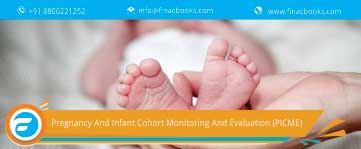New Income Tax Slab and Rate - Key Highlights

Introduction to Income Tax Return
It is mandatory for Indian citizens to file an income tax return every year in case their taxable income is in excess of Rs. 2.5 lacs. In India, the financial year (FY) begins from 1st April and finishes on 31st March of the following year. For instance, the FY2019-20 will begin from 1st April 2019 and ends on 31st March 2020. Also, it must be noted that assessment year (AY) is defined as the year directly succeeding the FY wherein the income of the financial year is evaluated. Hence, in the assessment year (AY) 2020 – 21, the income tax during the period from 1st April 2019 to 31st March 2020 would be evaluated
Understanding New Tax Rules For Financial Year 2019-20
On 1st February 2019, Mr. Piyush Goyal, interim Finance Minister of India (in the absence of Finance Minister - Mr. Arun Jaitley), put forward the 2019 interim budget in the Indian Parliament. In the interim budget, the below mentioned tax provisions were announced with regards to income tax rates and tax slabs:
The elementary exemption limit for an Indian citizen depends on the age of the individual along with his/her residential standing. Based on the age of an individual, each resident individual taxpayer is grouped into three categories:
- Resident individuals whose age is less than 60 years
- Resident senior citizens whose ages is more than 60 years but less than 80 years
- Resident super senior citizens whose age is more than 80 years
| Tax rates for individual for FY2019-20 | |||
| Particulars | Individual (age less than 60 years) | Senior citizens (age 60 years and above) | Super senior citizen (age 80 years and above) |
| Income up to Rs. 2.5 lacs | Nil | Nil | Nil |
| Income between Rs. 2.5 lacs and Rs. 3.0 lacs | 5% | Nil | Nil |
| Income between Rs. 3.0 lacs and Rs. 5.0 lacs | 5% | 5% | Nil |
| Income between Rs. 5.0 lacs and Rs. 10.0 lacs | 20% | 20% | 20% |
| Income more than Rs. 10.0 lacs | 30% | 30% | 30% |
*A resident individual, whose taxable income is equal to or less than Rs. 5.0 lacs, can claim a tax rebate u/s 87A
The above rates do not cover cess and surcharge:
Tax Slabs and Age Groups
For non-resident individuals (NRI), the elementary taxation exemption limit is set at Rs. 2,50,000 in a financial year regardless of their age
Understanding the Tax Liability Due to Increase in Cess
In the previous budget, the Indian government augmented cess on income tax for FY2018-19 to 4% as compared to 3% in FY2017-18 across the board for taxpayers. Because of the increase in cess, the amount of tax liability for higher slab individuals (supposing to have an income of Rs. 15.0 lacs) has gone up by Rs. 2,625. Similarly, the middle income tax slab liability has gone up by Rs. 1,125, and the lowest income tax slab liability has increased by Rs. 125
| Income tax slab for resident individual aged less than 60 years (0-59 years) | ||||
| Tax slab based on income | Rate of income tax and cess | Net taxable income | Post budget tax liability | Tax amount increased due to cess |
| Income up to Rs. 2,50,000 | Nil | 2,50,000 | - | - |
| Income between Rs. 2,50,001 and Rs. 5,00,000 | 5% of (net income minus Rs. 2,50,000) plus 4% cess | 5,00,000 | 13,000 | 125 |
| Income between Rs. 5,00,001 lacs and Rs. 10,00,000 | Rs. 12,500 + 20% of (net income minus Rs. 5,00,000) plus 4% cess | 10,00,000 | 1,17,000 | 1,125 |
| Income more than Rs. 10,00,000 | Rs. 1,12,500 + 30% of (net income minus Rs. 10,00,000) plus 4% cess | 15,00,000 | 2,73,000 | 2,625 |
| Income tax slab for resident individual whose age is more than 60 years but less than 80 years | ||||
| Tax slab based on income | Rate of income tax and cess | Net taxable income | Post budget tax liability | Tax amount increased due to cess |
| Income up to Rs. 3,00,000 | Nil | 3,00,000 | - | - |
| Income between Rs. 3,00,001 and Rs. 5,00,000 | 5% of (net income minus Rs. 3,00,000) plus 4% cess | 5,00,000 | 10,400 | 100 |
| Income between Rs. 5,00,001 lacs and Rs. 10,00,000 | Rs. 10,000 + 20% of (net income minus Rs. 5,00,000) plus 4% cess | 10,00,000 | 1,14,000 | 1,100 |
| Income more than Rs. 10,00,000 | Rs.1,10,500 + 30% of (net income minus Rs. 10,00,000) plus 4% cess | 15,00,000 | 2,70,400 | 2,600 |
| Income tax slab for resident individual whose age is more than 80 years | ||||
| Tax slab based on income | Rate of income tax and cess | Net taxable income | Post budget tax liability | Tax amount increased due to cess |
| Income up to Rs. 5,00,000 | Nil | 5,00,000 | - | - |
| Income between Rs. 5,00,001 lacs and Rs. 10,00,000 | 20% of (net income minus Rs. 5,00,000) plus 4% cess | 10,00,000 | 1,04,000 | 1,000 |
| Income more than Rs. 10,00,000 | Rs. 1,00,000 + 30% of (net income minus Rs. 10,00,000) plus 4% cess | 15,00,000 | 2,60,000 | 2,500 |
Tax Rate for Organisations
For a domestic company, income tax rates are:
For a partnership firm, income tax rates are:
Capital gains tax rate
| Capital Gains | Tax Rate |
| Apart from mutual funds and shares, long-term capital gains from assets | 20% plus 4% health education cess |
| Short-term capital gains on mutual funds, and shares | 15% plus 4% health & education cess |
| Long-term capital gains on mutual funds, and shares | 10% plus 4% health & education cess |
| Long-term capital gains on debt mutual funds | 20% plus 4% health & education cess |











